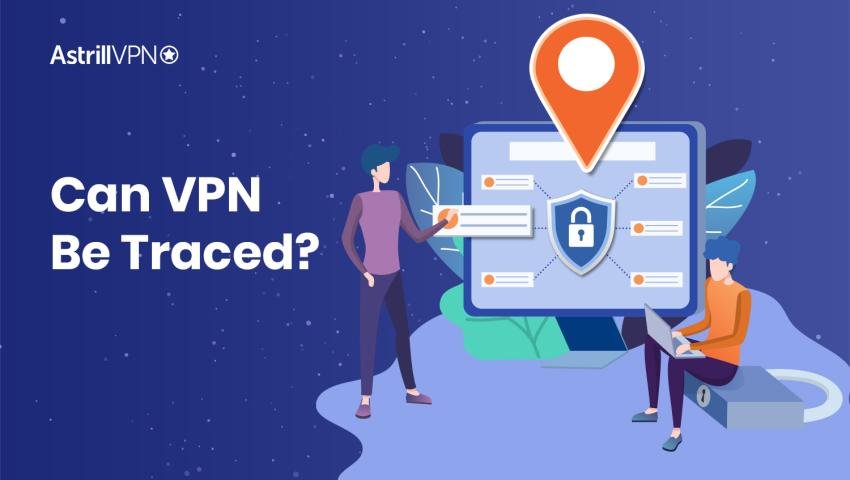
Tracing Hackers: Can You Really Find Someone Behind a VPN?
VPNs are designed to provide anonymity, but are they a perfect cloak? Discover the real-world techniques investigators use to potentially de-anonymize VPN users.
The scenario is a classic one in cybercrime investigations: a threat actor launches an attack, and the only lead is an IP address. A quick lookup reveals it belongs to a commercial VPN provider. For many, this feels like a dead end. The common perception is that VPNs provide perfect, untraceable anonymity.
But is that true? Can a determined investigator peel back the VPN layer to identify the person behind it? The answer is not a simple yes or no. It's a spectrum of possibility that depends on a combination of technology, legal authority, and operational mistakes by the user.
This article separates the Hollywood myth from the investigative reality.
The VPN Blind Alley: Why It's So Effective
First, it's crucial to understand why a VPN is such a strong anonymity tool.
IP Masking: Your internet traffic is routed through an encrypted tunnel to the VPN server. From there, it exits onto the public internet. To any website or service you connect to, the source IP address is that of the VPN server, not your home connection.
No-Logs Policies: Reputable VPN providers explicitly state in their privacy policies that they do not log any data that could link a user to an activity. This means that even if presented with a legal order, they have no data to provide.
Jurisdiction: Many privacy-focused VPNs are based in countries with strong privacy laws that are not part of broader international surveillance alliances.
Because of this, the direct path—Attack IP -> VPN Provider -> User—is almost always blocked if the VPN provider has a true no-logs policy.
The Investigative Playbook: How Someone Could Be Traced
Despite the strong anonymity, there are several scenarios where a VPN user can be de-anonymized. These methods don't involve "breaking" the VPN's encryption but rather exploiting weaknesses around it.
Here is a detailed breakdown of the methods illustrated above:
Method 1: The Legal Approach (The Most Common Path)
This method doesn't attack the technology but targets the business behind the VPN.
How it works: Law enforcement serves a warrant or subpoena to the VPN company, demanding the logs that connect a specific VPN IP address at a given time to a real user.
When it works: This method only succeeds if the VPN provider actually keeps logs, despite what their marketing might imply. A provider's response to a warrant reveals the truth of their "no-logs" policy. Several high-profile prosecutions have resulted from VPN providers that cooperated with law enforcement.
Limitations: A VPN provider with a verified, audited no-logs policy has nothing to hand over. This is a complete dead end for investigators.
Method 2: Technical De-anonymization (The Targeted Attack)
This involves technical methods to link VPN activity to a user's real identity.
How it works: If an investigator can monitor both ends of a connection—the victim's server and the suspect's real IP—they can correlate the timing and size of data packets. While the content is encrypted, the patterns of communication can be matched to prove the same source was responsible.
Endpoint Correlation: This is most effective when the user is logged into a service (like a Google or Facebook account) in one browser tab while conducting the attack through the VPN in another. The service provider can potentially link the two activities based on unique browser fingerprints or simultaneous access patterns.
DNS Leaks / WebRTC Leaks: If a user's device is misconfigured, their DNS requests (which translate website names to IP addresses) might bypass the VPN tunnel and be sent to their ISP's DNS server, revealing their true IP. WebRTC leaks in browsers can also expose the real local IP address.
Method 3: Exploiting Operational Security (OpSec) Failures (The Most Likely Success)
This is often the weakest link. A VPN hides your IP, but it doesn't make you a ghost.
How it works: The investigator ignores the VPN entirely and looks for clues left by the person behind the keyboard.
Examples:
Reusing Credentials: The hacker uses the same email address or username to post on a forum (e.g., bragging about the attack) that they've used elsewhere, linking the pseudonym to a real identity.
Metadata & Malware Mistakes: If the attacker uses a custom tool or document, embedded metadata (like a Microsoft Word author name or computer username) can be extracted by the victim.
Financial Trails: If the attacker pays for the VPN service with a credit card or a cryptocurrency exchange account that requires KYC (Know Your Customer), that financial information can be subpoenaed.
Case Study: The Capture of the "Apple Beta Test" Hacker
In a real-world example, a hacker blackmailed Apple by threatening to leak source code. He used a VPN and the Tor network. How was he caught?
OpSec Failure: He uploaded a file to Apple's iCloud service from his own IP address before connecting through the VPN and Tor to make the threats. Apple had a log of his real IP accessing the same file that was later used in the extortion attempt.
Correlation: Investigators correlated the timing of the iCloud upload with the subsequent threats, proving it was the same person.
The VPN was useless because his activity outside the VPN tunnel was linked to his criminal activity inside it.
The Bottom Line: Can You Really Find Someone?
| Scenario | Likelihood of Tracing | Why? |
|---|---|---|
| Skilled Hacker (Uses a verified no-log VPN, pays with Monero, has perfect OpSec) | Extremely Low | The technological and procedural shields are nearly perfect. |
| Moderate User (Uses a popular VPN, pays with PayPal, reuses usernames) | Possible | OpSec failures and potential provider logs create vulnerabilities. |
| Low-Skilled User (Uses a free, disreputable VPN, has DNS leaks, brags online) | Very High | Multiple points of failure make de-anonymization likely. |
Mrityunjay Singh
Leave a comment
Your email address will not be published. Required fields are marked *

